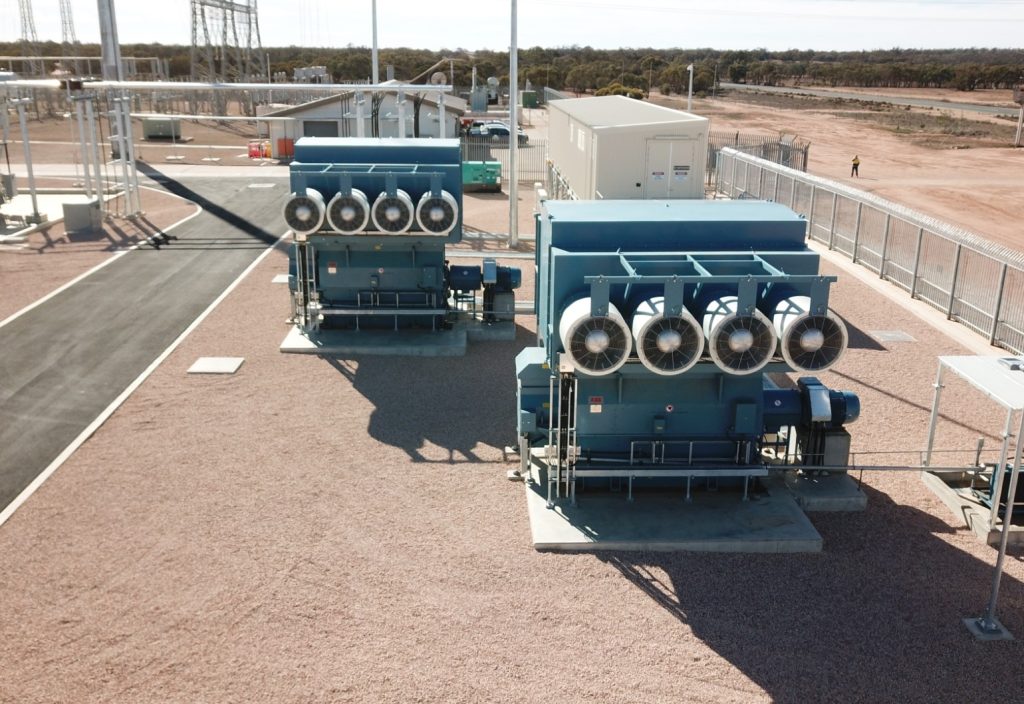Powering a mine with renewable energy shouldn’t come at the expense of stability and reliability. Here’s how ABB’s synchronous condensers can help to generate a stable energy supply.
The move towards electrification and decarbonised power production can place pressure on power grids on mine sites. Increased reliance on renewable energy often results in a reduction in spinning inertia support, which is critical to ensuring the generator can withstand sudden changes to the electrical grid.
The lowered short circuit level – the amount of current that enters the system when a fault occurs such as a lightning strike or equipment failure – can also create an unstable and weak grid.
Fortunately, synchronous condensers provide an excellent solution to these problems.
“These are rotating machines and once they’re synchronised with the grid, they spin with the same frequency as the power grid,” explains Christian Payerl, Sales Manager at ABB.
“If there is an external issue in the grid such as a voltage dip or a frequency change, synchronous condensers will react to that purely by physics to counteract those problems.”
The ability of synchronous condensers to withstand demanding environmental conditions also makes them an ideal solution.
“Synchronous condensers provide the strength needed in the grid to operate the plant in a more effective way,” says Payerl.
Synchronous condensers in action
Synchronous condensers are being used on a range of sites including on solar and wind farms around the world and in Australia.
“There is no spinning inertia on solar farms and in wind turbines. If there’s a problem in the network then there are often difficulties in adapting and counteracting that change. That’s because they are interfaced by power electronics which have limits on how much current they can provide,” says Payerl.
“If there is a change in the network, synchronous condensers can respond and counteract it in a very controlled way. That’s why solar and wind farms need this type of system strength to function properly. They need something that will keep the fault level high and that also provides them with a relatively stable variation of frequency.”
While synchronous condensers have been widely used on solar and wind farms, expanding their use to mine sites is a more recent development.
ABB installed two synchronous condensers on Xstrata Copper’s Antapaccay project in 2013. With the project located in a remote power area, the synchronous condensers have enabled safe, reliable and stable power transmission.
At the Copper Mountain mine in British Columbia, Canada, ABB has also built two synchronous condensers to support the mine’s transition to electrification.
Synchronous condensers not only provide immediate inertia support to ensure the frequency doesn’t go out of an accepted range, but they can also handle a higher fault current response compared to non-synchronous condensers. In addition, they’re able to produce reactive power when there’s a voltage dip, as well as absorb reactive power when voltage rises beyond an acceptable level.
Towards a more sustainable future
The primary purpose of synchronous condensers is to provide grid stability, but they can also provide dynamic reactive power compensation.
“The active power of industrial processes such as mines continuously changes, leading to variations in reactive power. As reactive power variations cause voltage variations, the voltage stability of the plant may be impacted. It is common to use switched capacitor banks to handle these reactive power changes, but switching off capacitor banks or filters is a tricky thing, as it creates voltage spikes, transients and even voltage dips.”
That’s why Payerl recommends using devices that provide dynamic reactive power compensation such as synchronous condensers.
“You get voltage stability, system strength and at the same time reduce the reactive power consumption of the plant.
“Renewable energy also helps to reduce costs for fuel because you’re likely decreasing the number of diesel or gas turbines needed on a mine site. The mine’s profitability is linked very closely with the steady and proper design of an electrical power system, and it’s also moving industry towards a greener future.”
Synchronous condensers can bring stability and reliability to your site. Visit ABB’s website to learn more.

